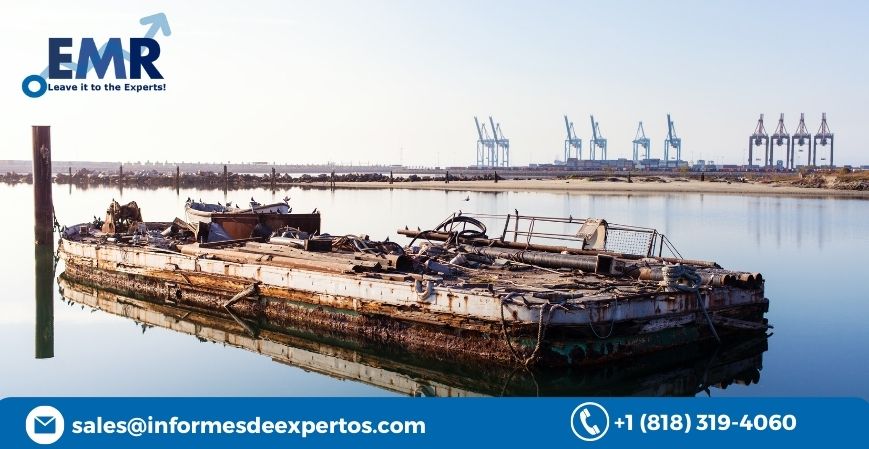Barge transportation, an age-old method of freight carriage, has gained renewed importance in the contemporary global economy due to its cost-effectiveness and efficiency. The global Barge Transportation Market reached a value of around USD 130.9 billion in 2021. With the escalating demand for this eco-friendly and economical mode of transportation, the market is predicted to grow at a Compound Annual Growth Rate (CAGR) of 3.50% in the forecast period of 2023-2028, attaining a value of about USD 160.7 billion by 2027.
What’s the Overview of the Barge Transportation Market?
Barge transportation involves the use of flat-bottomed boats, known as barges, for the movement of heavy or bulky goods along rivers and canals. Traditionally, barges have been instrumental in the transportation of low-value bulk items, including coal, gravel, and sand. However, with advancements in barge design and function, they are now also used to transport high-value items such as refined petroleum products, chemicals, and food products.
Components of the Barge Transportation Market
The barge transportation market comprises various components:
- Barges: These are the principal physical components of this market. They are broadly classified into dry cargo barges, liquid cargo barges, and car-float barges.
- Tugboats or Towboats: These vessels are used to push or pull barges along waterways.
- Infrastructure: This includes the ports, waterways, and canals used for barge transportation.
- Services: These entail the logistical aspects of barge transportation, such as loading and unloading, scheduling, and route planning.
Market Segmentation
The barge transportation market is segmented based on barge fleet, commodity, service, and geography.
In terms of barge fleet, the market is divided into open, covered, and tank barges. The commodity segment is split into dry cargo, liquid cargo, and gaseous cargo. Based on services, the market is segmented into transportation, handling, and logistics. Geographically, the market is distributed across North America, Europe, Asia-Pacific, and the rest of the world.
Benefits and Applications of Barge Transportation
Barge transportation provides several benefits. It is one of the most fuel-efficient means of transportation, offering substantial cost savings, especially for bulk commodities. It also has less environmental impact, with lower CO2 emissions per ton-mile compared to rail or truck transport.
In terms of applications, barges are utilized in several sectors, including agriculture, mining, and construction for transporting bulk commodities. They are also used in the energy sector for transporting coal, crude oil, and refined petroleum products.
What Factors Driven the Barge Transportation Market?
Several factors are driving the growth of the barge transportation market. These include increasing global trade, growing demand for petrochemical shipments, and the need for cost-effective and environmentally friendly modes of transportation.
Moreover, investments in port infrastructure and the dredging of canals and rivers to facilitate larger barges are also fueling market growth.
Challenges and Barriers in the Barge Transportation Market
Despite the growth drivers, the barge transportation market faces some challenges. These include the susceptibility of barge transportation to weather conditions and potential delays due to lock systems. Navigational issues in narrow and congested waterways can also pose challenges.
Moreover, the capital-intensive nature of barge transportation, particularly the high costs associated with barge acquisition and maintenance, can serve as a barrier to market growth.
What are Market Opportunities and Future Outlook?
Moving forward, the barge transportation market presents several growth opportunities. Technological advancements such as autonomous barges and the digitization of cargo handling processes could boost market growth.
Additionally, the increasing focus on reducing greenhouse gas emissions presents opportunities for this environmentally friendly mode of transportation. The anticipated rise in global trade also bodes well for the future of the barge transportation market.
In conclusion, the global barge transportation market is poised for steady growth in the coming years, driven by increasing trade, demand for cost-effective and eco-friendly transport, and advancements in barge technology. Despite challenges like weather susceptibility and high capital costs, the market holds promising prospects, particularly with the increased focus on reducing carbon emissions and the predicted rise in global trade.
You may also like
-
Automatic Fruit Wine Bottling Line for Small Wineries: A Complete Guide
-
How Does Plywood HSN Code Decide the GST Rate for Traders and Manufacturers?
-
POS Terminal Type: Which Is Best for Your Business?
-
How to Choose Fixed and Portable Gas Monitors for Industrial Gas Detection?
-
Simplifying Trademark Registration in Hong Kong: What Businesses Need to Know

